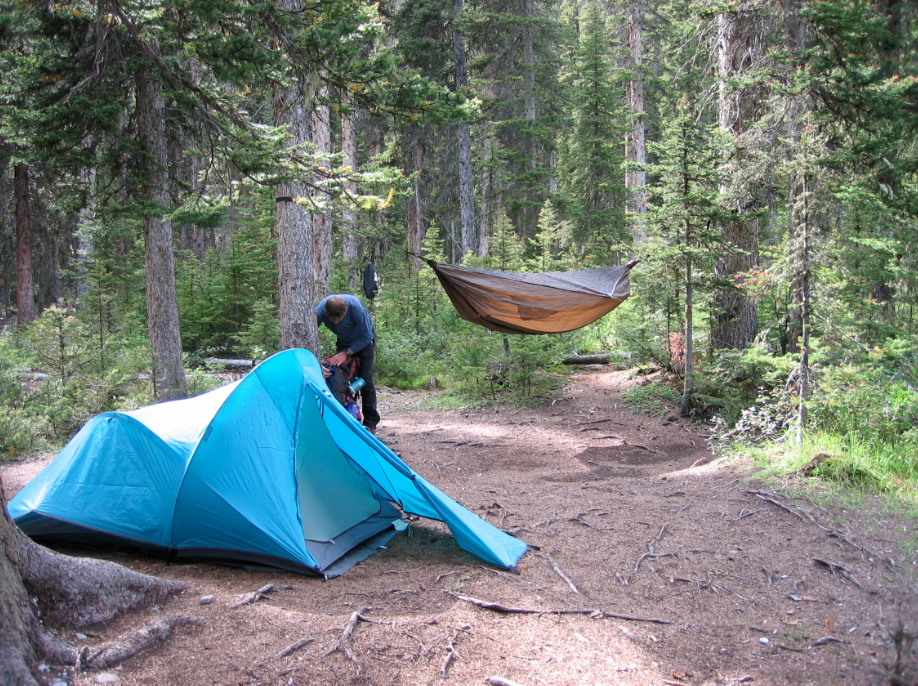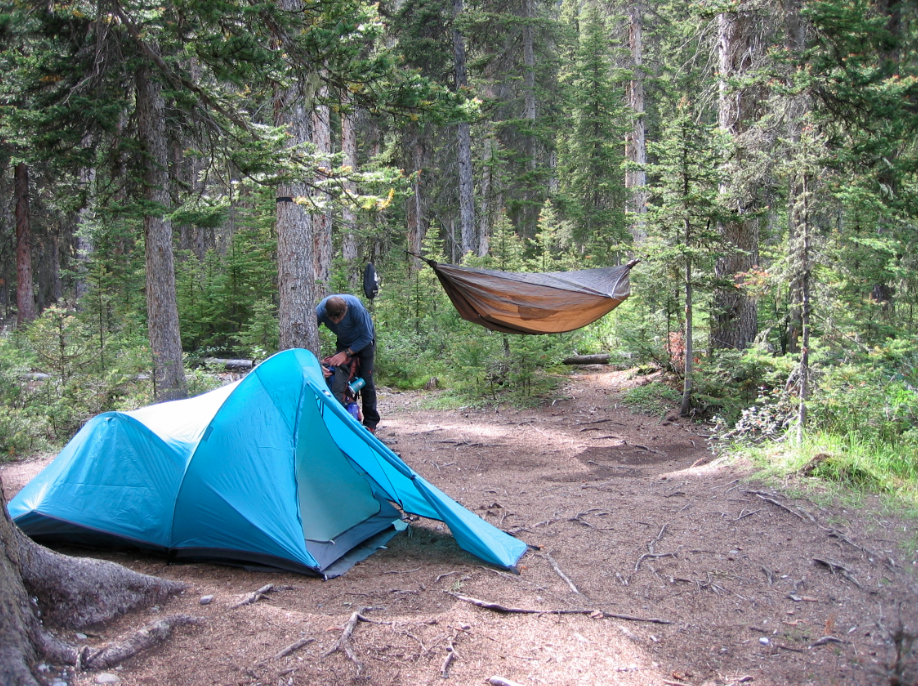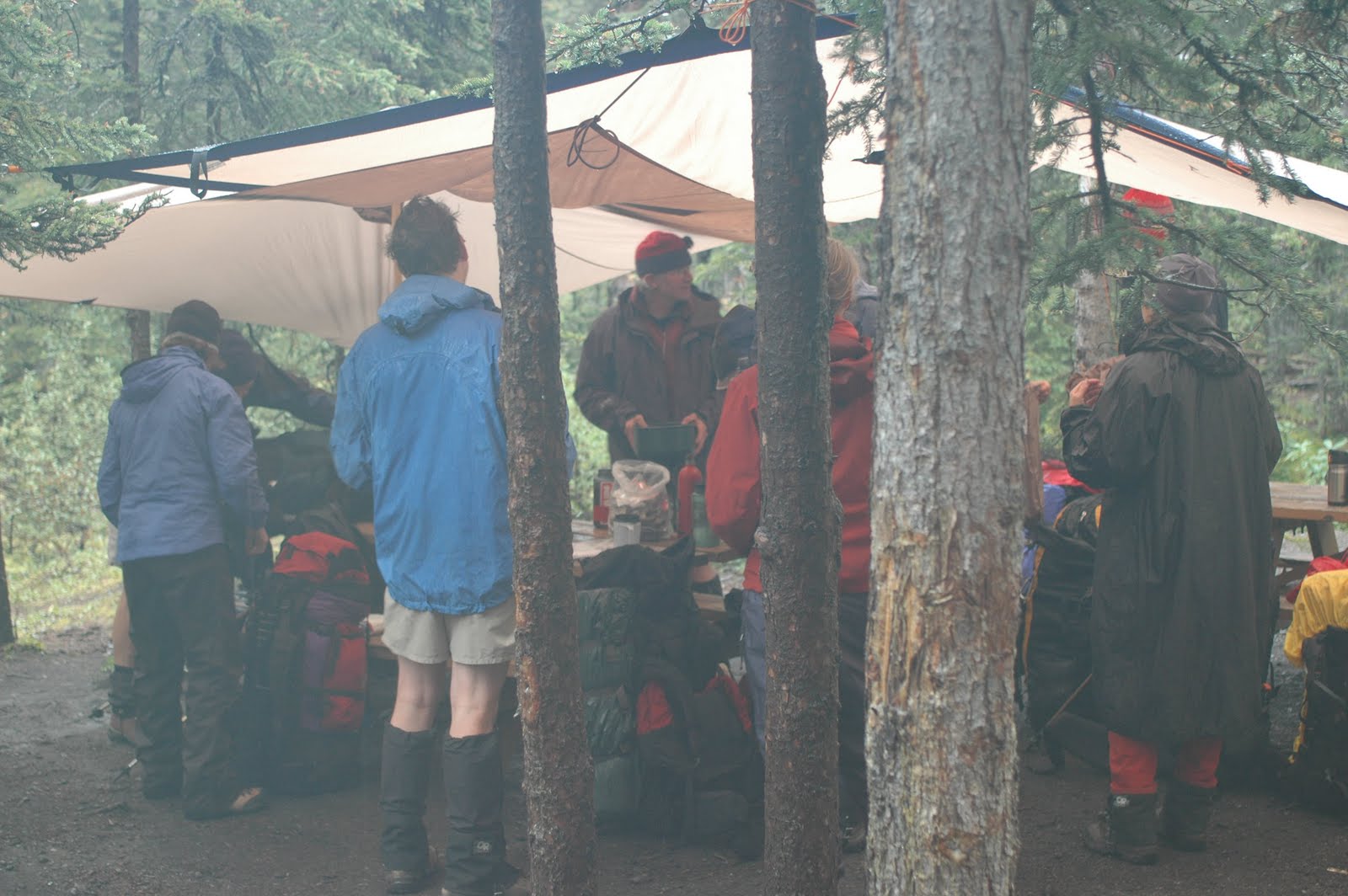News & Updates
Most Impact – Kitchen or Sleeping Area?


Thanks to all of you who posted comments on our recent Facebook question: Which area of your camp receives the most use –sleeping area or kitchen?
Generally speaking, the camp kitchen receives more impact than sleeping areas. While there are certainly exceptions to the rule, the majority of time in camp, for most groups, is spent in the kitchen area. This is particularly true if there is a fire ring in the kitchen area – think about all those feet moving around the campfire trying to avoid the smoke (“I hate white rabbits, I hate white rabbits…”). For most sleeping areas, whether using a tent or not, there is generally minimal impact in terms of trampling, scuffing, micro-trash, damaging disturbance of vegetation, etc. Whereas in the kitchen, it’s the gathering place, especially when you’re with a larger group. The kitchen is where not only the cooking takes place but also where groups tend to congregate, socialize, move around, walk around, sit, stand, scuff feet, etc.
From the Leave No Trace North American Skills & Ethics Booklet:
Wherever you camp, use surfaces that are resistant to impact such as rock outcrops, sand, gravel, dry grasses, snow or water.
Concentrate use in popular areas. In popular areas, concentrate use on trails, established campsites, and other developed sites such as trailheads and picnic areas. Concentrating use in these areas and, if necessary, on the surfaces mentioned earlier, will minimize disturbances to soils and vegetation. Because animals learn to expect people on trails, they’re less disturbed by encounters with people on-trail than off.
Use established campsites. Choose a well-established campsite that’s big enough for your group. Some popular areas have officially designated campsites, shelters or platforms. Use of these amenities can reduce damage to vegetation and other natural features. Where campsites are not formally designated, look for and use sites where the ground cover is already worn away. Wear soft-soled shoes and concentrate your activities in the center of the site to avoid enlarging it.
In bear country, it is advisable to separate the sleeping and cooking areas. Otherwise, tents, packs, gear, and the kitchen area should be concentrated in one area on previously compacted, naturally resistant, or reinforced surfaces. This approach protects surrounding vegetation and prevents development of “satellite” sites.
Also consider your visual impact on other users or wildlife. Take advantage of opportunities to tuck your tent out of view behind natural screening such as trees or rocks.
Good campsites are found, not made. What makes the perfect campsite? Safety, privacy, and comfort never go out of style, and securing such amenities does not entail a major remodeling effort. We can bring our own lightweight furniture and conveniences along to eliminate the need to create them on-site. Camp stoves, mattresses, tables, chairs, lanterns—even solar showers—are readily available at reasonable prices, and they pack in and out with ease.
Leave your campsite clean and natural looking—naturalize it. In wildlands, we are visitors, but we are also hosts to those who follow. They will notice our hospitality, or lack of it. Litter, graffiti, tree damage, visible human and pet waste, unsightly fire rings and the like are senseless acts. By taking the time to pick up after ourselves and others, if necessary, we’ll all benefit.
Even in campsites, leave the area as natural as possible. Breaking off a tree branch for firewood creates an ugly scar and opens the tree to disease. Proper firewood collection is discussed under Minimize Campfire Impacts.
Disperse use in pristine areas. Proliferation of trails and campsites has alarmed both resource managers and travelers across North America. Even where visitor use has remained relatively stable, such as the Spanish Peaks Wilderness, MT, campsites are sprouting up in traditionally low use areas. Visit remote or pristine areas only if you are committed to Leave No Trace in that environment. Using established routes, trails and campsites is always preferable to pioneering new ones.
Campsites. Select the most durable camping location possible. In pristine areas, pre-existing camping spots, even those that are lightly used, should be left alone to recover. Before unpacking your tent, look for obvious bird nesting activity and other signs of animals. Choose an area that seems safe, free of wildlife, and well suited to low-impact camping. Look for a large rock slab, a graveled area, or other equally durable space to locate your kitchen. Concentrate your activities on this surface whenever possible to protect more fragile areas. If necessary, reserve less durable ground for your sleeping area.
In pristine areas, impacts can often be avoided by staying only one night. In these areas, vary your route to water, to the “bathroom” and to sleeping areas to prevent trails from forming. In general, manage your activity to avoid harming the natural features of the site, especially those that do not regenerate or do so very slowly—such as lichens and trees.
Breaking camp. Before departing, naturalize and disguise the site by replacing any rocks or sticks you may have moved. Re-cover scuffed-up areas with leaf litter or pine needles. Fluff up matted grass and make the place less obvious as a campsite. As long as overall visitor use is very low, the site will retain its best qualities. Ideally, no trails or campsites will be created if visitors disperse their activities.
Obviously every camping situation is different, and depending on your particular style you may create more or less impact than another group in your kitchen and/or sleeping area. However, knowing how to make the best decisions with regards to where you locate your kitchen and sleeping area, i.e. using durable surfaces, previously impacted surfaces, designated sites, etc., will go a long way towards minimizing your overall impact.
Let’s protect and enjoy our natural world together
Get the latest in Leave No Trace eNews in your inbox so you can stay informed and involved.


